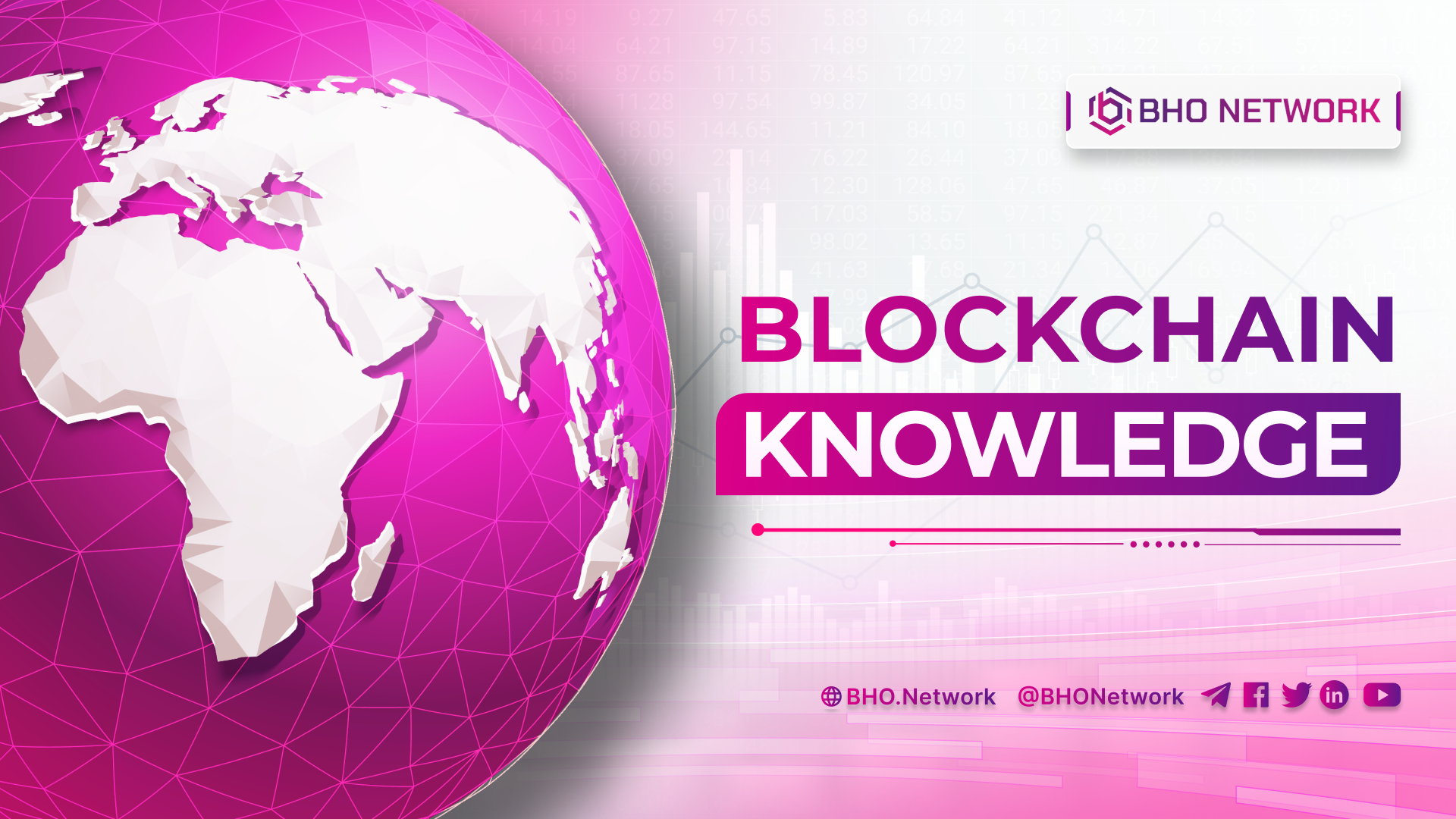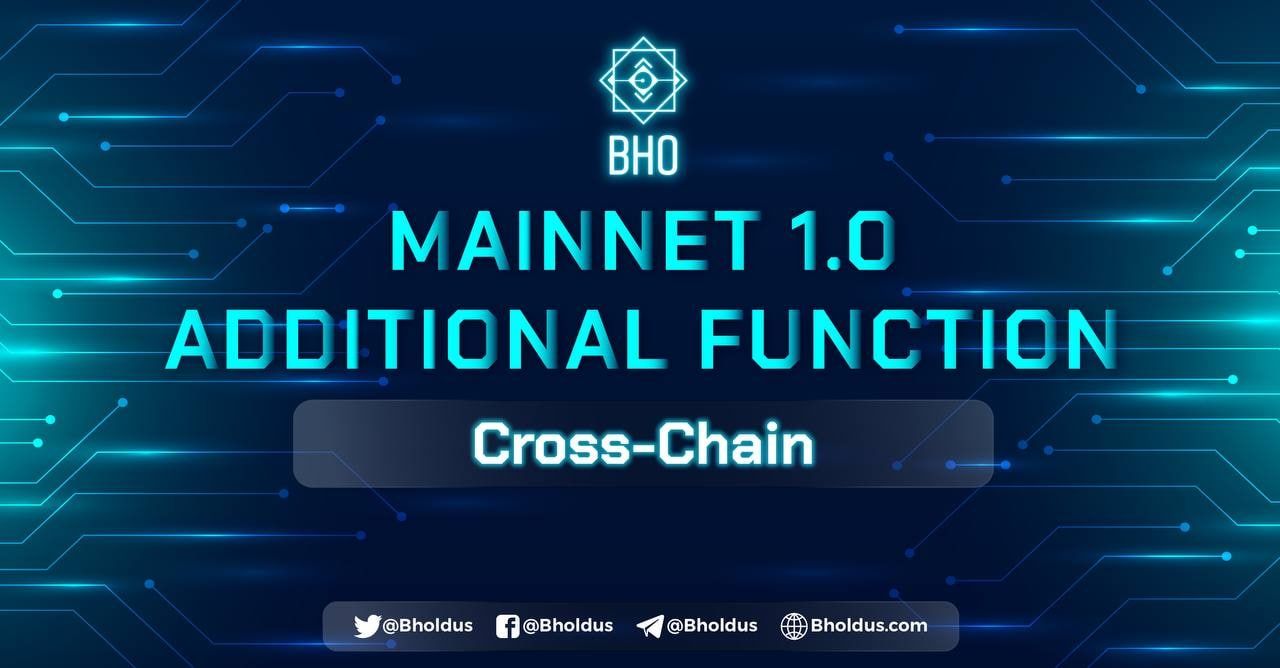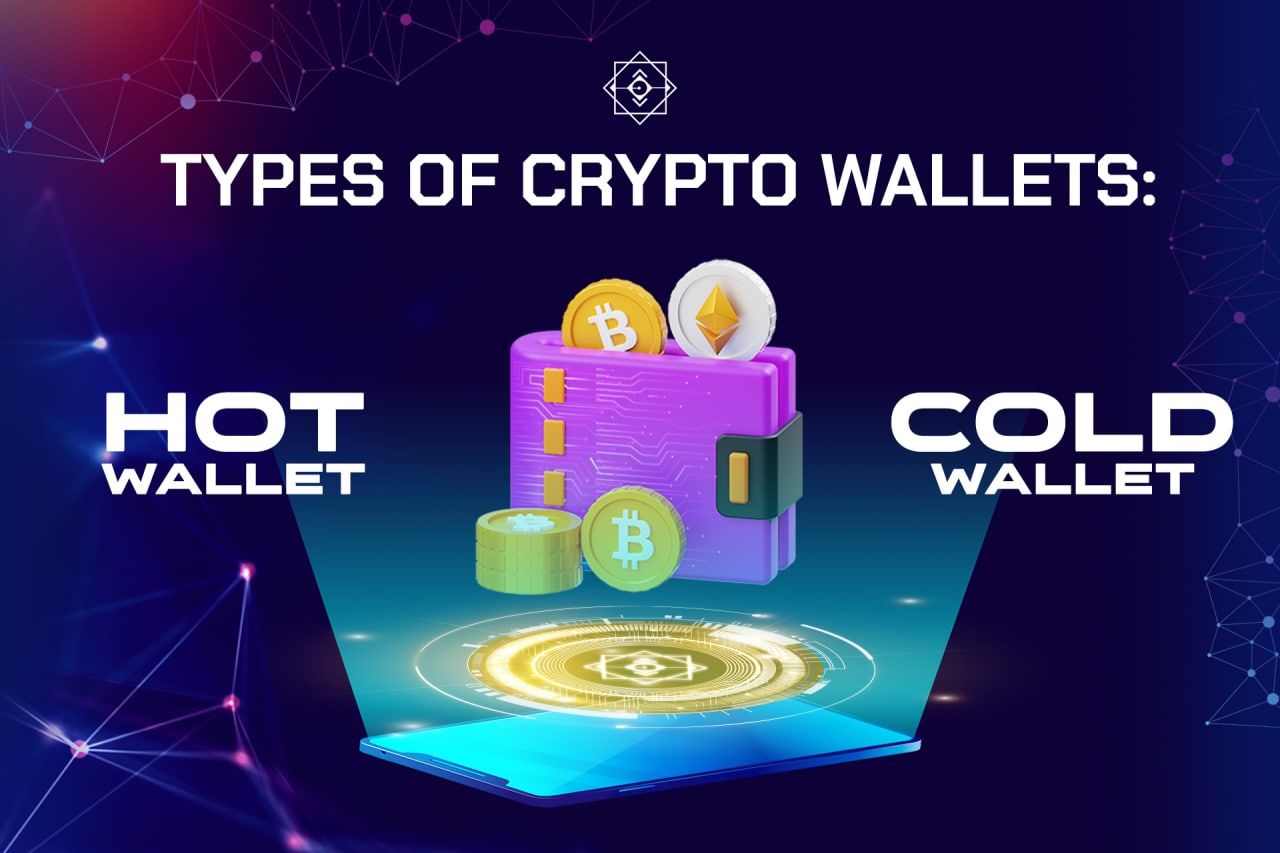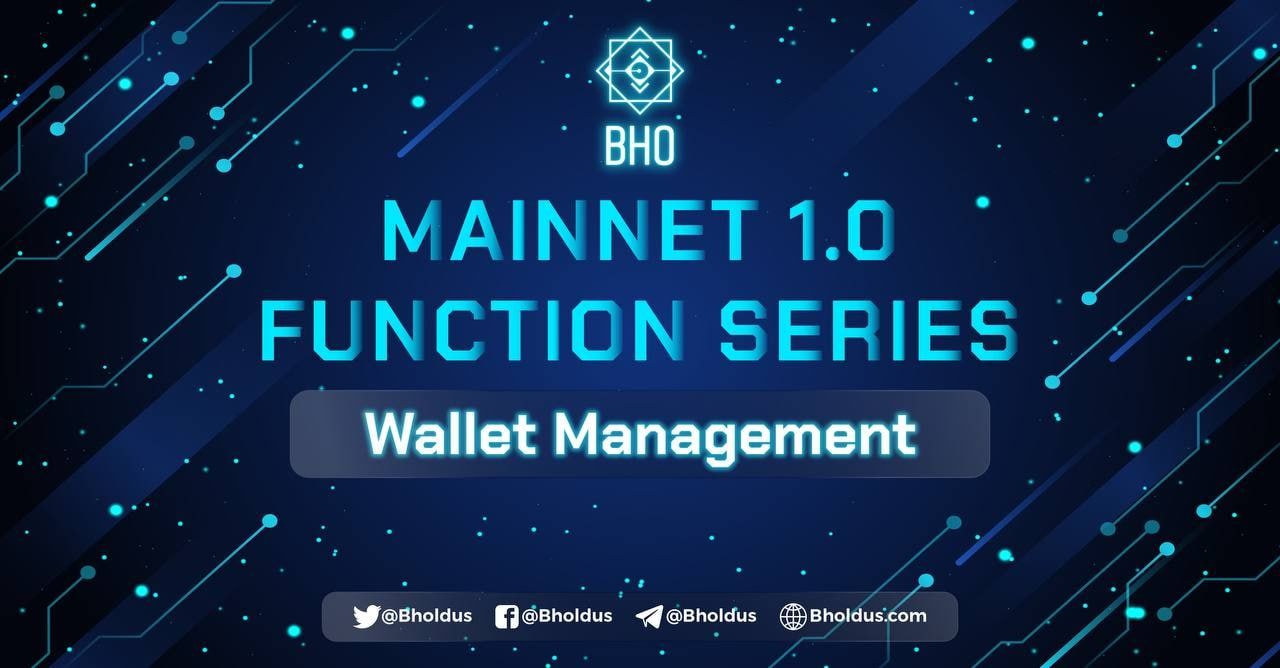- Blog
- Crypto News
- What is Web 3.0? Learn the outstanding features of web 3.0
What is Web 3.0? Learn the outstanding features of web 3.0
- 1. What is Web 3.0?
- 1.1 Web 1.0
- 1.2 Web 2.0
- 1.3 Web 3.0
- 2. Features of Web 3.0
- 2.1 Highlights of Web 3.0
- 2.2 Disadvantages of Web 3.0
- 3. How does Web 3.0 work?
- 4. Revolution 3.0
- 5. What are the problems of Web 3.0?
- 5.1 Slow speed
- 5.2 Unfriendly for new users
- 5.3 Massive Junk Data Flow Data
- 6. Are Web 3.0 and Blockchain technology related?
- 7. What Makes Web3
- 8. The potential of Web 3.0
- 9. Outstanding Web 3.0 Projects
- 9.1 Filecoin
- 9.2 Livepeer
- 9.3 Arweave
- 9.4 The Graph
- 9.5 Helium
What is Web 3.0? Why was Web 3.0 created and does it have the potential to change the kernel in the future? Read the article on BHO Network below to answer this question.
1. What is Web 3.0?
Before learning about Web 3.0, we must go back in time and take a closer look at its predecessors, Web 1.0 and 2.0. Here's a brief history of the Internet:
1.1 Web 1.0
Like the Middle Ages, Web 1.0 didn't get a name until it became obsolete. As we all know, 'World Wide Web' is just a collection of static web pages containing much information and no interactive content.
To connect to the network, you would dial through a rickety modem and during that time no one in the house could use the phone. These are AltaVista's network of AOL chat rooms and Ask Jeeves, and MSN Messenger. It's slow. Want to stream videos and music? Then it takes at least a day to download the songs!
1.2 Web 2.0
Most of the tedious modems and interfaces are gone. Faster Internet speeds have paved the way for interactive content and the Web is no longer just observation, but direct participation.
The global sharing of information has created the era of social media, Youtube, Wikipedia, Flickr, and Facebook have given voice to the lowly and provided a vehicle for like-minded communities to thrive.
1.3 Web 3.0
Web 3.0 aka Web3, is the third version of the internet that connects data in a decentralized way to deliver a faster and more personalized user experience.
It is built with artificial intelligence, machine learning and semantic web, and uses a Blockchain to keep your information safe and secure. Decentralization, openness, and incredible user utility are the defining features of web 3.0.
In addition, Web3 will enable websites and applications to make more meaningful use of data and tailor information to each user.
2. Features of Web 3.0
- Open: được tạo ra bằng phần mềm mã nguồn mở.
- Trustless: a network that gives users the freedom to interact publicly and privately. No 3rd person puts them at risk, so the data is unreliable.
- Permissionless: anyone, including users and providers, can participate without the organization's permission.
- Ubiquitous: Web3 will make the internet available anytime and from any location. Internet-connected devices will not be limited to computers and smartphones like Web 2.0. Because IoT allows the development of countless new types of smart gadgets.
2.1 Highlights of Web 3.0
Web 3 will make the web more intelligent and more secure. This leads to more efficient browsing and increased user-computer interaction. Let's look at one of the top advantages of Web 3.0.
Data privacy and control
End users get the essential advantage of data encryption to protect their information from being exposed. Encryption will be unbreakable under any particular circumstances. So users have full ownership and privacy over their information.
Seamless Service
Decentralized data storage will ensure that users can access data under any circumstances. Users will receive multiple backups, which benefits them even in a server failure.
Besides, no entity can stop any service or website. Thus, the possibility of account suspension and denial of delivered services is reduced.
Transparency
When end users use blockchain they will track their data and check the code behind communication. Nonprofits develop the majority of Blockchain platforms, which means they provide an open source Blockchain platform.
Open Data Accessibility
Data will be accessible from any device and from anywhere. Data is collected and made available to users worldwide by allowing smartphones and other connected devices to access computer data if synced.
Web 3.0 will expand from seamless payments to richer information flows and reliable data transmission. This will happen because Web3 allows users to interact with machines without going through a toll intermediary.
Unlimited Platforms
Since everyone can access the Blockchain network, users can create their addresses or interact with it. Users cannot be restricted on this network based on gender, income, geographic location or sociological factors.
This feature will make it easy for users to quickly transfer their possessions anywhere in the world.
Create a unique profile
With web 3.0 users do not need to create individual profiles for different platforms. A single profile will work on any platform and users will have full ownership over any given information.
Without the user's permission, no company can access their data or verify its accuracy. However, users can choose to share their profile and sell their data to advertisers or brands.
Advanced Data Processing
Is beneficial for deep knowledge generation and problem solving tasks. It uses artificial intelligence to filter out valuable information from large amounts of data. Users will also benefit from the ability to perform customer demand forecasting and personalized customer service, which is essential for growing businesses.
2.2 Disadvantages of Web 3.0
Web 3.0 also has some challenges regarding personal data management and reputation management. Here are the challenges associated with implementing and using Web3.
Advanced equipment requirements
Less advanced computers will not be able to provide the benefits of Web 3.0. Device features and characteristics will need to be expanded to make the technology accessible to more people globally. Currently, only a limited number of people can access Web 3.0.
Web 1.0 Web Sites Will Be Obsolete
If Web 3.0 becomes official on the internet, any website based on Web 1.0 technology will become obsolete. Old technology cannot update its features to accommodate new technology. That means those sites will be outdated and lose their competitive edge over new areas.
Not ready for widespread adoption
of increasingly intelligent, efficient and accessible Web3 Technology. However, the technology is not quite ready for widespread adoption yet. More research is needed on technological advancements, privacy laws, and data usage to meet user needs.
Demand for reputation management will increase
As user information becomes available and less anonymous through Web3.0, reputation management will become more of an issue than ever. In other words, brands and companies must maintain their name, reputation and image online.
Companies will need to help customers gain critical market intelligence, valuable business insights, engaging content, and cutting-edge Internet marketing ahead of the competition. As a result, reputation management will become more important than ever.
Complex functionality
Web 3.0 is a complex technology for any new user, which makes them hesitant to use it. It combines old-generation web tools with cutting-edge technologies, such as AI and Blockchain, as well as the connection between users and the increasing internet use.
Only advanced devices can handle Web 3.0, making it difficult for any individual or business who cannot afford such devices. Since technically savvy users will benefit most from this technology, the complex nature of Web 3.0 is likely to slow its popularity on a global level.
3. How does Web 3.0 work?
The idea behind Web 3.0 is to make Internet searches faster, easier and more efficient to handle even complex inquiries in a short time.
In a web 2.0 application, the user must interact with its user interface. This interface will communicate with its backend, communicating with its databases. The entire code is stored on a centralized server and sent to the user via an Internet browser.
Web 3.0 has neither a centralized database that stores application state nor a centralized web server where the backend logic resides. Instead, there is a Blockchain for building applications on a decentralized state machine and maintained by anonymous nodes on the web.
The logic of your applications is defined in Smart Contracts, written by developers, deployed on a decentralized state machine. Anyone willing to build a Blockchain application deploys their code on this shared state machine. The user interface is still close to web 2.0.
Read more: What is Segwit? All the information about Segwit
4. Revolution 3.0
At this stage, Web 2.0 proponents were able to envision a successor technology. They imagine the next-generation Web as moving towards the vision of Web 1.0 thoughtfully: more "human" and more privacy-preserving. Instead of power (and data) being concentrated in the hands of the big companies, it should be returned to the rightful owners.
The vision of a fairer, more transparent web has been around since 2006, but the tools and technology weren't ready. Bitcoin has brought about the concept of a distributed ledger or blockchain for peer-to-peer digital storage. So decentralization is the main idea; blockchain is the medium.
While Web 2.0 has democratized many power structures and created many new opportunities, the economic engine has largely been privatized and become monopolistic. Many large companies have made their networks of public infrastructure. However, Web 3.0 is the opposite, it involves multiple profit centers sharing value on an open network.
5. What are the problems of Web 3.0?
Web 3.0 has a lot of advantages but also has a few problems, such as:
5.1 Slow speed
Decentralized internet has better security and error resistance but also slower speed due to having to run authentication nodes actual.
Note that the transaction speed of the cryptocurrency is not the information transfer rate of the blockchain but is correlated. 1 transaction in the blockchain can carry specific data.
5.2 Unfriendly for new users
The user must be the most knowledgeable of all of the current decentralized technologies unfriendly to new users. Regulations on Blockchain technology to be able used.
The transition from the traditional web to the decentralized web will have to happen gradually from the traditional one, partially decentralized, to fully decentralized one for Internet users to adapt.
While it is likely that the future of the internet will be decentralized, it does not mean that centralized systems will be abandoned entirely as they are still needed.
Due to security concerns, a decentralized system cannot arbitrarily scale like a centralized system. Bitcoin or Ethereum have extremely poor scalability, making the networks running on these Blockchains often congested. This severe problem that Web 3.0 needs to solve to become a reality.
5.3 Massive Junk Data Flow Data
Stays on blockchain forever, so they make blockchain heavier and heavier. Moreover, Blockchain technology requires each node to download all Blockchain data, making the total capacity of blockchain on the entire network even more terrible. Take Ethereum's Blockchain for example, which reached 300 Giga bytes in size on September 19.
6. Are Web 3.0 and Blockchain technology related?
Web 3.0 is a decentralized network, but a decentralized network must have a consensus mechanism to authenticate information and make members can trust each other, Blockchain technology is the consensus mechanism to solve that problem.
Without Blockchain technology, Web 3.0 would have to be put on hold until another reliable consensus mechanism is found. In contrast, Web 3.0 is another blockchain application besides cryptocurrency and electronic storage.
7. What Makes Web3
Different Unlike Web 2.0, Web 3.0 doesn't need an intermediary. No centralised database holds the application state, and no centralized web server functions the backend logic.
Users can leverage blockchain to build applications on a decentralized State machine maintained by anonymous nodes on the internet.
A state machine is a machine that maintains certain program states and allows future states on that machine. Blockchains are state machines initialized with some initial state and stringent rules.
No single entity controls this decentralized state machine, which everyone in the network maintains. Instead of holding medium's backend, in Web3 you can write Smart Contracts that define the logic of your application and deploy them on a decentralized state machine.
Read more: What is Proof of History (PoH)? Everything about Proof of History
8. The potential of Web 3.0
The breakthrough advantages of Web 3.0 have been opening great doors to help create business models and industries that were hard to imagine before. A typical example of the present time is Crypto.
The application of Blockchain technology with removing the trust factor, eliminating the need for a third party in the transaction, has created great experiences and products.
With just 1 Non-Custodial wallet, users can send money to anyone anywhere in the world.
9. Outstanding Web 3.0 Projects
With the above information, users can also see the breadth of Web 3.0. Below, BHO Netowork will list a few outstanding Web 3 projects.
9.1 Filecoin
Filecoin is similar to Arweave, the same project in the Decentralized Strorage array. Filecoin is known as one of the first names in the field of Storage and is most prominent thanks to the application of an open source distribution protocol.
9.2 Livepeer
Livepeer is the supporting infrastructure for Decentralized Video Streaming. Livepeer takes advantage of blockchain's decentralization so that users can control the content they create and freely share it.
9.3 Arweave
Arweave is a Blockchain Data Storage Protocol based on the new generation Proof of Access consensus algorithm to create the world's first genuinely permanent data store.
9.4 The Graph
The Graph is a protocol that allows indexing and querying data from the Blockchain, The Graph enables anyone to build and publish APIs called Subgraph. Subgraph makes it easier to access Data from Blockchain.
9.5 Helium
Helium is a decentralized wireless network built on the Blockchain platform. It works on Proof of Coverage and a new consensus algorithm based on HoneyBadger BFT.
Related posts:
- What is Cloud Mining? Learn the basics of Cloud Mining
- What is AMM? Things you must about Automated Market Maker
Hopefully, the above article of BHO Network has helped users better understand what is Web 3.0. If you are interested in building Web 3.0 applications or anything related to Web3, then follow and read the upcoming articles of BHO Network.
Published on February 25, 2022
Tagged topics







